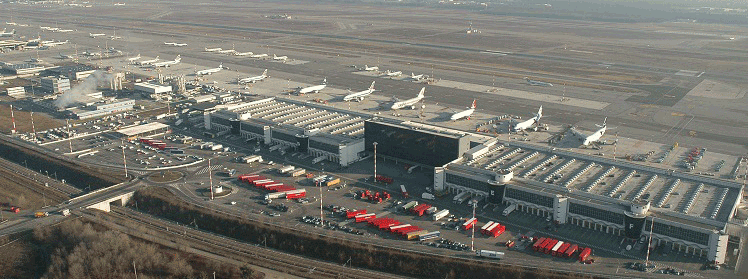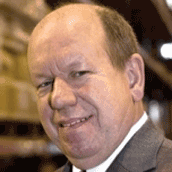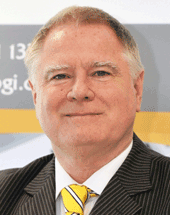

There
were three important and informative gatherings that capped off the
air cargo trade show event year for 2014.
To us, the content of these industry encounters
can serve as a primer for things to come in 2015.
No better time to think about the future,
we say.
First came The Air Cargo Handlers Conference
(ACH) held in Milan.
Next was The International Air Cargo Association
(TIACA) Air Cargo Forum (ACF) held in Seoul, Korea.
Finally, there was the FIATA annual world
event that was held in Istanbul, Turkey.
It has occurred to us that in the rush
and the overstuffed schedule of one trade show after another, quite
a few worthwhile presentations may have become lost in the blur.
FlyingTypers editors have selected some
outstanding sessions from all three events, which we have euphemistically
titled “Best In Show.”
This 10-part series begins in this issue
and continues for the rest of 2014, delving deep into several presentations.
We hope all this fine effort might enjoy
some further reflection whilst advancing participation when viewed through
the prism of time.
We appreciate your comments.
Blow
By Blow At CHC Milan Pt 1
The 6th Annual Cargo Handling Conference
(ACH) was held in Italy at the Sheraton Milan Malpensa Airport Hotel
from September 17-19, 2014.
We have enlisted one of the keenest minds
in air cargo today, Head of Calogi J. Patrick Murray, to provide first-hand
comments on the sessions’ content.
Mr. Murray is a much sought-after speaker
and panel member at air cargo events all over the world, and will be
providing fair and balanced observations as our series moves along.
The entire package, including all pictures
and text, will be available after release here at www.aircargonews.com.
ACH
Takes Off
 Oliver Bijaoui, president and chief executive officer for WFS, opened
the conference and began with an upbeat message: there are now signs
of recovery.
Oliver Bijaoui, president and chief executive officer for WFS, opened
the conference and began with an upbeat message: there are now signs
of recovery.
According to Oliver, the main drivers
are the recovery of mature regions (America and Europe); dynamism in
the AMEA regions; a slowdown of integrator penetration; transfer of
manufacturing to low-cost countries; worldwide fleet increases; development
of e-commerce and associated portal services; and increasing outsourcing
from airports and airlines.
 Giulio
Embraces Malpensa
Giulio
Embraces Malpensa
Giulio De Metrio, (left) the conference host
and COO of SAE Milan Airports, also welcomed the delegates, explaining
that after being affected by the economic downturn, MXP airport was
able to recover in the second half of 2013. MXP is the first airport
in Italy and sixth in Europe, and is one of the fastest growing in Europe.
Milan is looking forward to EXPO 2015 and the new cargo airport will
be available for tenants starting March 2016.
COAG
Hot Topic
COAG Update – David Ambridge, general
manager cargo, Bangkok Flight services, Brendan Sullivan, manager for
dangerous goods and training standards, IATA.
David Ambridge took the stage and explained
that COAG continues to make progress towards standardization and simplification,
with the aim to remove complexity from our disjointed business.
 Brendan
Sullivan then introduced the conference to the COAG organization. Established
in 2012, COAG aims to integrate cargo operational standards into IATA
standards. Other objectives include improving IATA manuals relating
to Cargo Operations (IGOM), interacting with key cargo-operation stakeholders,
and removing complexity.
Brendan
Sullivan then introduced the conference to the COAG organization. Established
in 2012, COAG aims to integrate cargo operational standards into IATA
standards. Other objectives include improving IATA manuals relating
to Cargo Operations (IGOM), interacting with key cargo-operation stakeholders,
and removing complexity.
COAG reports into that Cargo Committee
and has a dotted line to the Ground Handling Council
COAG deliverables include:
•
Amending the cargo section of the standard ground handling agreement
to facilitate e-AWB and support a single process, aligning it to modern
practices;
•
Enabling e-standard cargo operations procedures (IGOM Chapter
3);
•
Listing standard cargo operational procedures and producing a
facility capabilities matrix.
Brendan explained that the capability
matrix helps identify possible non-compliance in critical areas and
identifies the need for transparency and consistency through the supply
chain to retain modal competitiveness and avoid shift. Amongst the areas
of focus are safety, security, special cargo, and messaging.
The Facilities Capability Matrix (FCM)
will be used to assess and validate current GHA capabilities, with the
benefit being that there will be confidence in GHA compliance, which
will allow airlines to reduce audit requirements. The FCM also allows
the matching of customer needs to services performed.
The initial findings when developing the
matrix were that the assessment must recognize other existing audit
requirements; be third party and independent; and be implemented consistently.
Furthermore, some errors/correction were
found in the list when conducting pilots and some ‘in scope’
areas do not have complete standards and require reference to external
standards with more details required in some areas (alignment with company
audits).
The next steps are as follows:
•
Self-Assessment pilot by COAG members, four by September 2014
and four by end 2014;
•
Cargo Services Conference Members to review contents and provide
feedback;
•
IGHC and ASA members to review and feedback;
•
Assessment module produced by March 2015 to coincide with IATA
WCS.
David Ambridge explained that the deliverables
for Q4 2014 are an industry-recommended service level agreement with
simplified SLA being renamed ‘recommended’ SLA. The SLA
will be aligned to the industry Master Operating Plan to allow better
management of service levels and moving towards real time updates. It
still needs to be recognized that some airlines have specific Unique
Selling Points.
Finally, COAG recognized that IATA Cargo
Operations contents were spread across multiple publications, including
regulatory requirements, resolutions, and recommended practices, were
duplicated and rewritten into rules/tact, and were also available online
in e-freight procedures, and this needs to be addressed.
Hughes
Speaks Up
 During question time, IATA Head of Cargo Glyn
Hughes (right) told the audience that the IATA Cargo Committee was 100
percent behind COAG and asked how COAG could drive the initiative to
shave 48 hours off of the transit time of a shipment. David responded
that this is the most important thing COAG can do this year. First,
we need to understand why cargo is delivered days before a flight departs
and collected days after the flight has landed. David hopes to report
on the findings during WCS in Shanghai 2015 to see how the time can
be reduced.
During question time, IATA Head of Cargo Glyn
Hughes (right) told the audience that the IATA Cargo Committee was 100
percent behind COAG and asked how COAG could drive the initiative to
shave 48 hours off of the transit time of a shipment. David responded
that this is the most important thing COAG can do this year. First,
we need to understand why cargo is delivered days before a flight departs
and collected days after the flight has landed. David hopes to report
on the findings during WCS in Shanghai 2015 to see how the time can
be reduced.
Other
Voices
 Lothar
Moehle, (left) director of Global Airfreight, Security Standardization
DB Schenker, suggested that COAG also consult with forwarders to ensure
a ‘joined up’ approach.
Lothar
Moehle, (left) director of Global Airfreight, Security Standardization
DB Schenker, suggested that COAG also consult with forwarders to ensure
a ‘joined up’ approach.
Finally moving forward with e-AWB, David
explained that the plan is for the forwarder to deliver the shipment
without the air waybill, with printing handled by the airline or handler.
We asked audience member J. Patrick Murray,
(right) top executive at Calogi IT based in Dubai, for some comments
on this and other sessions at ACH.
Here is Patrick’s take:
“Having worked with various committees
over the years, it’s probably fair  to
say that COAG are the most passionate in terms of what they do. David
Ambridge made the observation that committees very often move at the
pace of the slowest member; however, moving forward, he acknowledged
that there is now a clear danger that if there is no sense of urgency,
some may be left behind.
to
say that COAG are the most passionate in terms of what they do. David
Ambridge made the observation that committees very often move at the
pace of the slowest member; however, moving forward, he acknowledged
that there is now a clear danger that if there is no sense of urgency,
some may be left behind.
“The COAG team currently meets three
times a year and rely on the support of their members.
“There is a lot to be done in this
area and the more feedback and help they get, the better for all of
us.
“It’s also encouraging that
COAG have offered to look at where the delays occur and why it takes
so long for an air freight shipment to travel from A to B when the airline
segment normally takes a maximum of 24 hours.
“Let’s get behind the COAG
guys and work with them to resolve many of the issues relating to the
shipment dwell time on the ground,” Patrick Murray declared.
Geoffrey
Part Two, Next Issue





